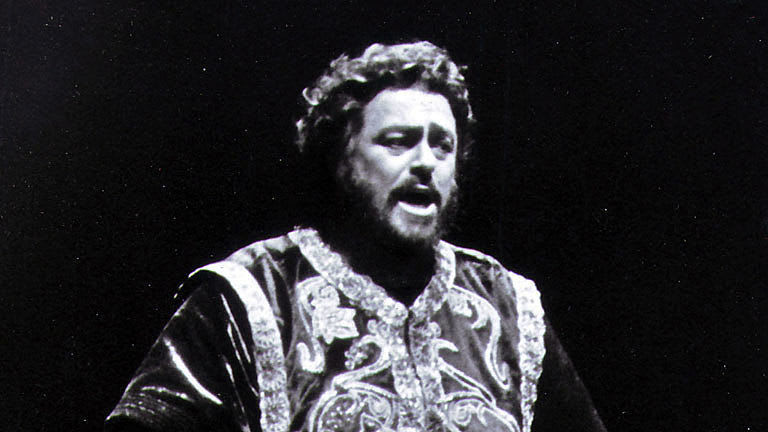Il Trovatore premièred in Rome in 1853 and was a big success worldwide. Giuseppe Verdi, who knew what his19th century audiences liked, embraced romantic melodrama wholeheartedly and relished its worst excesses.
Two men, rivals in love for the same woman, want to kill each other and when one of them succeeds, he learns (too late) that the man he has killed (wait for it) was the brother he was separated from at birth and thought dead.
A woman at the very moment she is about to take her vows and enter a convent is abducted (wait for it) not by one lover but by two lovers. (And, as is well-known, three in an abduction is a bit over-crowded.)
A mother, as an act of revenge, wants to throw another mother’s baby into a pyre but (wait for it) by mistake she throws her own baby into the flames and goes mad.
A man learns that his mother is not his mother and (wait for it) he learns she is a murderer as well; but he loves her still.
A woman promises to marry the man she does not love if he will save the man she does love from being beheaded. And then, and then (wait for it) she takes poison so that she will die before he can marry her. (Necrophilia is his only option.)
Charles Dickens, who was holidaying in Italy, saw the opera in Naples and thought ll Trovatore rubbish but well played. But then nobody goes to Il Trovatore for the story, which is very complicated; though, if you follow the subtitles, far easier than reading the synopsis, it is, in fact, not that complicated. Audiences go for the melodies and the singing. Enrico Caruso (who had sung Manrico briefly) famously said all you needed for a good performance were the four greatest singers in the world.
This performance, conducted by James Levine, which was seen at The Metropolitan New York in 1988, had Luciano Pavarotti as Manrico, Eva Morton as Leonora, Sherill as Count Di Luna and Dolora Zasick as Azucena. The leading role (and Verdi was adamant about this) is Azucena, who saw her mother burned at the stake for witchcraft and swore to take revenge.
The story is set in Spain in the 16th century and it’s all doom and gloom. The stage is dark and cheerless. The lighting is murky. The main feature is an enormous stairway on which only the chorus is occasionally allowed to sit.
Manrico is about to be married to Eleanor but first he has to rescue his mum from the stake (the lady’s not for burning). And then again, he also has to sing two arias and take two curtain calls and so he arrives too late and is imprisoned. Had he taken only one curtain call, the story might have been totally different.
Luna sings about his ardent love for Leonora and brings the whole chorus with him to abduct her. When Manrico arrives to abduct her, too, they draw swords and Verdi pulls out all the stops and leads us into a great finale for act 2 and a cheering curtain call.
There is little evidence of a director. The singers just stand and deliver. And for many people, operagoers rather than theatregoers, that will be more than enough when it is such singers as Pavarotti, Morton, Sherill and Zasick.
With Il Trovatore, you live from aria to aria and a bit of old-fashioned, crude, vulgar passion, when it is by Verdi, can do you a lot of good.
There are a number of ways of tapping into this opera and others at will. The Met Opera On Demand service offers annual ($149.99) and monthly ($14.99) subscriptions as well as a one-off payment ($3.99) for those who have limited time or only want to watch the occasional opera.
